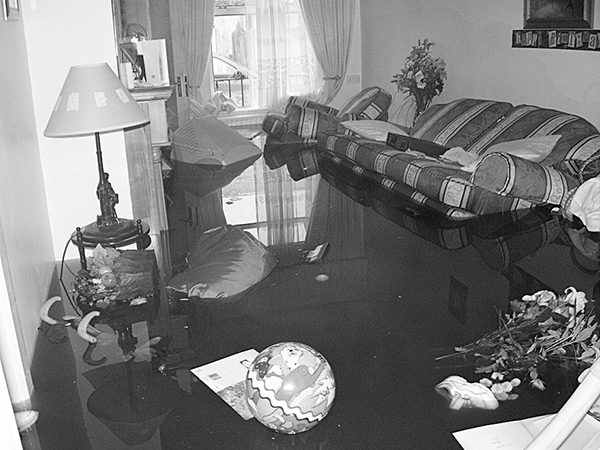
Pictured: A nightmare flashback to the Ringsend floods of 2002.
Dublin City Council has proposed further coastal flood defence measures to counter the effects of future flooding incidents in Dublin 4 coastal areas. The planned works arise from an analysis by DCC of recent flood damage in the Sean Moore Park and Merrion Gates areas.
Coastal flooding remains a pressing issue in D4 coastal communities. Extensive flooding in February 2002, which affected some 1,200 properties, caused an estimated €60 million in damages and compelled DCC to invest heavily in flood defences to stem the rising tides.
Despite significant improvements in flood defences January 3rd, 2014 saw the quays flood due to a record tide of 3.014 metres, the highest level recorded in the area.
The high water resulted in sandbags being deployed in the Strand Road and Fitzwilliam Quay areas. The history of flooding in the area has presented some local residents with difficulties in obtaining adequate insurance policies on their properties.
DCC Regional Projects and Flood Advisory Office hosted a public pre-planning stage meeting in the Sandymount Hotel on July 21st where they presented the most recent Coastal Flood Defence Scheme plans to local members of the public and other interested parties.
The presentation explained how Phase 1 of the scheme will see flood defence works commence on the promenade on Sandymount Strand between Gilford Avenue and St. Alban’s Park. Upgrades there are to include a raising of the height of the footpath/sea wall and the installation of lockable flood gates at the vehicular and pedestrian accesses along the promenade.
At the July 21st meeting Gerard O’Connell, DCC Engineer in Charge of the Flood Defence Unit, explained to local residents how he hoped that planning permission for the sea-wall upgrades would be obtained later this year with work commencing next year.
Residents attending the meeting broadly approved of the proposed flood defence plans but a number of issues of concern were raised including questions regarding local drainage systems, some of which became backed up during times of floods, and the question of obtaining house insurance in areas previously affected by floods.
Several locals complained that there is no consistent policy among insurance companies for awarding insurance coverage in the area despite clear statements and letters of comfort from DCC indicating that the likelihood of flooding has been greatly reduced due to flood defences having been improved.
By Harry Bradley



